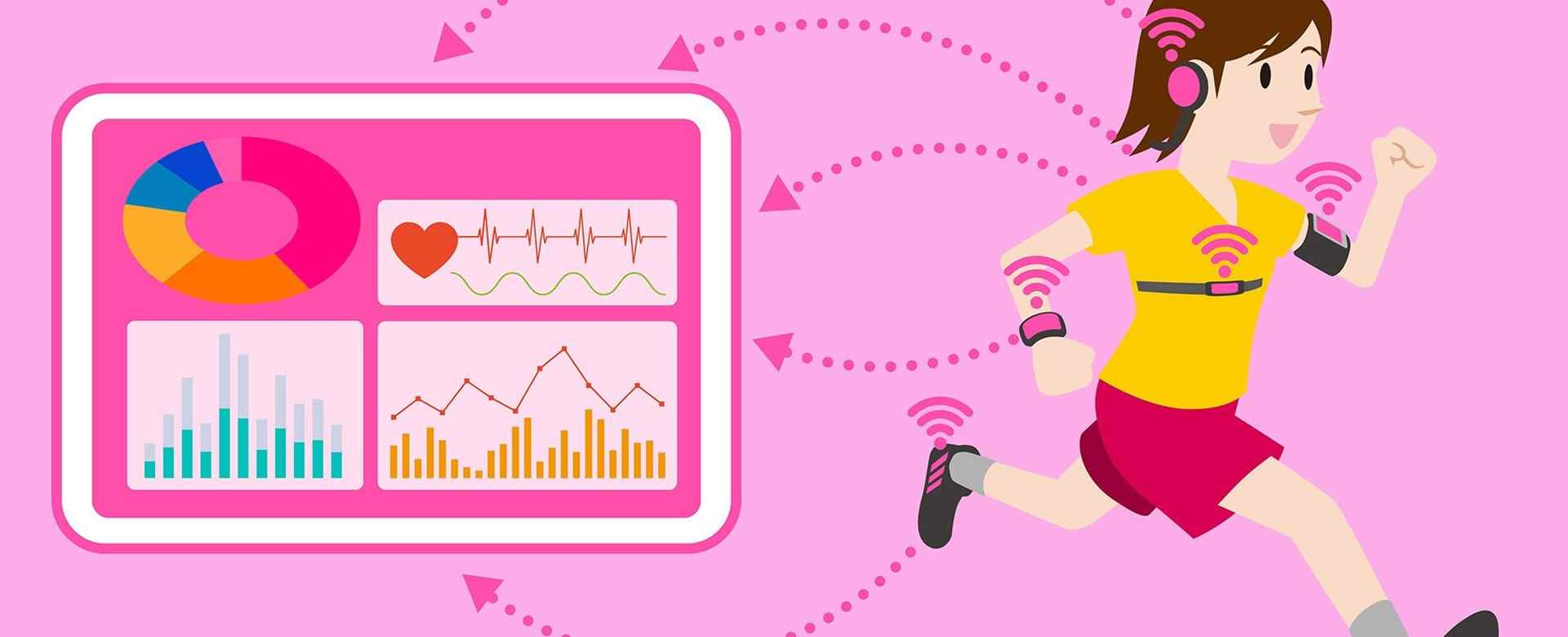Wearable technology has been popular for about a decade. Many people wear watches, bracelets, and other devices that count their steps and heart rate and can be used for GPS tracking.
According to Gallup’s annual Health and Healthcare survey, 19% of United States residents report wearing a wearable fitness tracker. The U.S. comprises the second-largest wearable device market globally.
One study found that wearable health devices are more effective than patient surveys and other methodologies in providing key predictors of mortality. In another, two-thirds of patients stated they’d utilize a wearable health monitoring device if it meant it could reduce the number of times they had to physically visit a doctor or hospital.
The emergence of femtech
Today, fitness trackers and health apps are more popular among women than men. There’s even a name for such products geared specifically toward women: femtech, or female technology. The femtech industry is estimated to be worth $50 billion by 2025.
We’ve compiled a list for you of some of the best products to hit the femtech market in recent times. Some of these devices were created in the U.S., while others were designed in other parts of the world.
Ava
According to the company that manufactures this night-only wearable bracelet, it is “clinically proven to identify both the opening and closing of the fertile window, letting you know your five best days to try for a baby.” The device was launched in the U.S. in July 2016 and was shown in a University Hospital of Zurich clinical study to identify an average of 5.3 fertile days per cycle with an accuracy of 89%.
Ava tracks five different physiological markers – temperature, resting heart rate, heart rate variability, respiratory rate, and perfusion – to accurately pinpoint when a woman is most likely to be fertile. It also tracks and logs sleep, resting heart rate and stress levels. Depending on the model, the Ava bracelet is priced from $259.
Livia
Some women suffer from severe menstrual cramps and Livia is an FDA-approved device designed to reduce or eliminate that pain. It’s a form of Transcutaneous Electrical Nerve Stimulation (TENS) machine with two electrodes and 16 intensity settings. It comes with a USB charging cord and is small enough that you can wear it under clothes without it being noticeable. Livia comes in a removable case available in multiple colors. The device is priced at $149 and includes a three-month supply of gel pads; a replacement pack costs $29.
My Skin Track UV
Although this tiny wearable sensor wasn’t designed specifically for women, it’s a product more likely to be used by them. With a price of just under $60, it’s sold by New York-based La Roche-Posay, a L’Oréal brand. The device doesn’t require a battery, just a smartphone app to which your results can be sent. My Skin Track UV keeps track of your exposure to UV (both UVA and UVB rays), humidity, pollen and pollution. It also offers skincare advice determined by your results, which has proved a less popular feature.
Owlet Smart Sock 2
The Smart Sock 2 is designed for babies and infants. It comes with three fabric socks (sizes 0-18 months), a Smart Sock sensor, a base station and charging cords. The device wraps around a baby’s foot and is paired to the base station through Bluetooth and an app on your smartphone. Using infrared light, it tracks heart rate, oxygen levels and sleep, providing notifications with lights and sounds if those levels stray from the preset safe zones. At $299, the price of the Smart Sock 2 is significant, and it will cost you $100 more for a magnetic base and the HD 1080p Owlet Camera with night vision and two-way audio to your smartphone.
Elvie Pump
This is a “silent” wearable electric breast pump that fits into your bra. It’s designed to be worn inside a standard nursing bra and is made of five cleanable parts: the hub, a detachable milk bottle, with a spout and valve, and a breast shield and seal. There are no cords, wires or tubes. The single pump model is $279, and the Elvie Pump Double is available for purchase at $499.
The Elvie Pump has a corresponding smartphone app that lets users monitor milk volume and remotely control the pump. It automatically starts in stimulation mode but switches to expression mode after a couple minutes. Its sensor detects when the milk container is full and automatically stops pumping. The cost of the Elvie Pump is reimbursable by many insurance companies.
FemTech and Telehealth
While many workplace wellness plans and health plans have adopted wearable technology to engage with patients and promote health, the full impact of this technology has yet to be measured. How wearables integrate with primary care and how consumers access healthcare, for example, is already being tested through the expansion of telehealth services.
Sign up for Updates:
Privacy Details
By submitting this form, you are consenting to receive marketing emails from: Advanced Medical Reviews, LLC. You can revoke your consent to receive emails at any time by using the Unsubscribe link, found at the bottom of every email.
